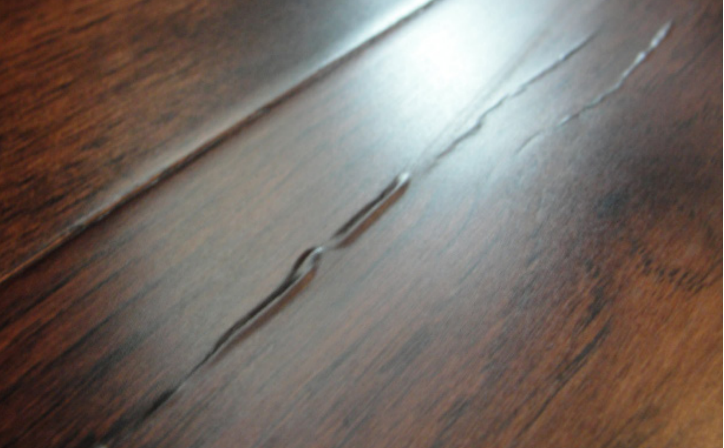
Stain bleed back is a unique phenomenon
that can occur following the application of stain. While the stain dries, it wicks back to the surface of the wood, ultimately leading to color inconsistencies and finish issues. It can happen at the board seams, the surface of the board (often following
the grain pattern), knots, or burls.
Cause

The main culprit of stain bleed back is failure to allow the stain to fully dry. Unfortunately, it can be difficult to ascertain whether or not stain has completely dried, because while it appears dry on the surface of the wood, an abundance of stain
deep in the cell cavities is often still liquid.
Rushing to coat over undried stain too soon will only exacerbate the issue, as the stain that has “bled back” and the trapped solvents therein can create severe long-term issues, including poly-beading, peeling, and even complete finish failure.

Prevention and Testing
The only way to prevent stain bleed back is to allow stain adequate time to dry. It is also critical to avoid pouring stain directly onto a wood surface or allowing pools to sit, both of which cause stain to soak down into the cracks between boards.
Always read and apply stain following the manufacturer’s application instructions. Take note of temperature and humidity levels, as these can affect drying times. There are several options for testing that the stain has dried, including:
- Wiping the floor with a clean rag to detect wet stain.
- Using moisture meters are always recommended, but they can be inaccurate in testing whether stain is ready to coat—especially over cracks. They can also be affected by certain pigments or solvents in the stain.
- A less-well-known secret is using a vacuum hose directly on the stained floor on those areas that would be the most likely to still be wet, such as cracks and knots, to bring any undried stain to the surface. If excess stain appears upon vacuuming,
allow the floor more time to dry and retest before proceeding
The unique nature of waterbased stains, like Basic Coatings® HyperTone™ Stains, will greatly
reduce bleed back and related issues.

Resolving
Once bleed back happens, it can sometimes be amended by aggressively screening the floor and exposing the trapped stain. After allowing time for it to fully dry, touch up any color issues and recoat. If extensive stain bleed back has occurred below a finish film, however, the floor will require a complete re-sand.
If you have questions about stain bleed back or other issues you are experiencing, please click here, fill out the online form, and your Basic Coatings Regional Manager will reach out to you.
Photos courtesy of NWFA’s Problems, Causes, and Cures (3rd Edition, 2018).